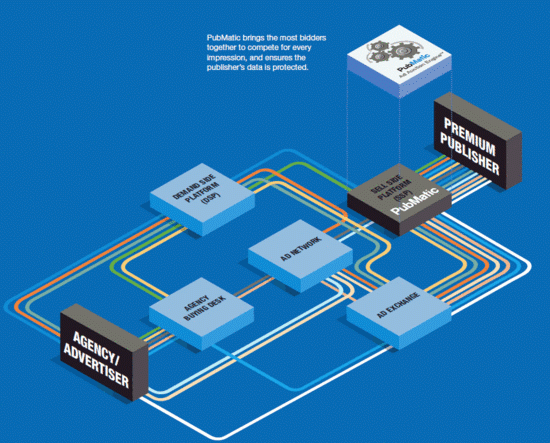Check out How much does possible price tariff ads on 92.3 FM Los Angeles radio advertising cost. Local advertisements in any part of L.A radio station commercial estimated average rate from $250.00 to $1,000.00 per 30 second commercial spot. Note : Individual radio station rates are not readily available. Our estimates are based on regional averages and may be very inaccurate. Advertising rate estimates are typically for a 30 second spot. Seasonal factors and volume discounts should also be considered. Contact the radio station's advertising department for an exact quote on their current rates. In some cases, our estimated rates may be significantly different from the actual current rates, so be sure to get your ad prices from the station before completing your budgeting. 2015 Radio Advertising Average CPM, Take note : This is not stable pricing list, this is estimated only. How much does rate a 30 second radio commercial advertising price cost? According past year data ...
RTB - Real Time Bidding Advertising System Benefits to Advertiser and Publisher,
RTB is a style of programmatic buying in which digital advertising opportunities are auctioned off in real-time.
It should allow ad buyers to take full advantage of mobile's virtues — the ability to target potential customers according to demographics, location, and context. RTB should help sellers effectively monetize the huge, and growing mobile audience.
Allows advertisers to stop wasting media spend,
Allows advertisers to see exactly where the impressions were served,
Advertisers are increasingly seeing brand market,
Advertisers can pay CPM privately,
Advertisers are now increasingly seeing the potential brand campaign,
Advertise directly to Publishers,
Both publishers and advertisers continue to reap directly adopted globally,
Automation,
Integration,
Optimization,
Digital advertising what high-frequency trading is to Wall Street. It involves computerized, algorithm-driven trading that allows for quick buying of ad impressions according to pre-set parameters.
On the desktop, programmatic or automated buying of display ads has already made huge inroads. Its advocates say that it has led to a more transparent and efficient digital ad market. But it is in mobile where programmatic buying may make the most difference. That's because smartphones are advertising platforms that we carry in our pockets, and with RTB that means marketers can reach us in real-time, and target potential customers according to location and context.
In a recent report from BI Intelligence on real-time bidding (RTB), we analyze how it may help solve the mobile advertising CPM problem, detail its recent impact and successes on ad buyers and sellers, examine the potential obstacles to its widespread adoption, and look at how the holy grail of mobile advertising — controls and efficiencies — may be reached through its use.

RTB means that travel advertisers can target their customers only at the cost they're willing to pay, rather than buying wholesale impressions. Real-time bidding also allows for fine-tuning: advertisers can change how they target their campaign over time and respond to consumer demand. A real-time bidding agency can offer a great way to best enable companies in the tourism sector to target their advertising and even stories to those consumers that best represent the customer profile that they are focusing on.
Compared with this highly-selective direct response advertising process, 'normal' advertising, in which the same ad is seen by the whole audience, whatever the customer's location, age, income bracket and level of education may be, can be seen to be more of a 'spray and pray' type approach.
RTB is a style of programmatic buying in which digital advertising opportunities are auctioned off in real-time.
It should allow ad buyers to take full advantage of mobile's virtues — the ability to target potential customers according to demographics, location, and context. RTB should help sellers effectively monetize the huge, and growing mobile audience.
photo courtesy of Pubmatic
RTB Campaign Advertising Benefits
Allows advertisers to stop wasting media spend,
Allows advertisers to see exactly where the impressions were served,
Advertisers are increasingly seeing brand market,
Advertisers can pay CPM privately,
Advertisers are now increasingly seeing the potential brand campaign,
Advertise directly to Publishers,
Both publishers and advertisers continue to reap directly adopted globally,
Automation,
Integration,
Optimization,
Digital advertising what high-frequency trading is to Wall Street. It involves computerized, algorithm-driven trading that allows for quick buying of ad impressions according to pre-set parameters.
On the desktop, programmatic or automated buying of display ads has already made huge inroads. Its advocates say that it has led to a more transparent and efficient digital ad market. But it is in mobile where programmatic buying may make the most difference. That's because smartphones are advertising platforms that we carry in our pockets, and with RTB that means marketers can reach us in real-time, and target potential customers according to location and context.
In a recent report from BI Intelligence on real-time bidding (RTB), we analyze how it may help solve the mobile advertising CPM problem, detail its recent impact and successes on ad buyers and sellers, examine the potential obstacles to its widespread adoption, and look at how the holy grail of mobile advertising — controls and efficiencies — may be reached through its use.
RTB Discussion for Brands Publishers,

RTB means that travel advertisers can target their customers only at the cost they're willing to pay, rather than buying wholesale impressions. Real-time bidding also allows for fine-tuning: advertisers can change how they target their campaign over time and respond to consumer demand. A real-time bidding agency can offer a great way to best enable companies in the tourism sector to target their advertising and even stories to those consumers that best represent the customer profile that they are focusing on.
Compared with this highly-selective direct response advertising process, 'normal' advertising, in which the same ad is seen by the whole audience, whatever the customer's location, age, income bracket and level of education may be, can be seen to be more of a 'spray and pray' type approach.
